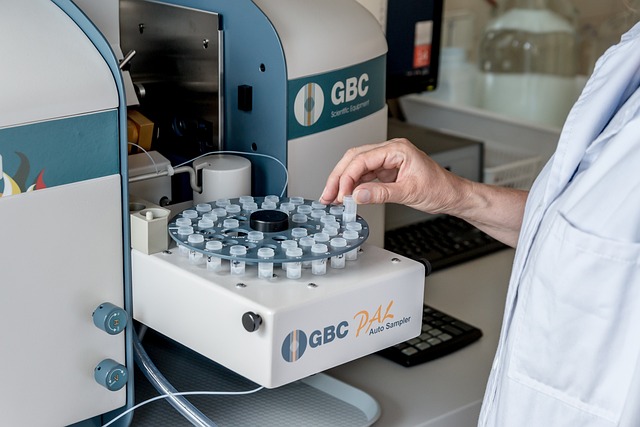Trauma, whether acute or chronic, significantly impacts mental health, often leading to Post-Traumatic Stress Disorder (PTSD) if left untreated. PTSD is characterized by intrusive memories, avoidance behaviors, heightened arousal, and negative shifts in thoughts and mood, hindering daily functioning. Effective PTSD treatment requires understanding trauma's effects on the brain. Therapy offers a safe space for individuals to process painful memories and emotions, with specialized techniques like Cognitive Processing Therapy (CPT) and Eye Movement Desensitization and Reprocessing (EMDR) to reprocess traumatic events and reduce intense reactions. Personalized therapy plans are tailored to each client's unique experiences and needs, focusing on fear and emotion processing through desensitization and emotional regulation techniques. These structured sessions guide clients towards healing, personal growth, and enhanced resilience, ensuring past traumas do not dictate future happiness.
Trauma recovery therapy sessions play a pivotal role in helping individuals navigate and overcome Post-Traumatic Stress Disorder (PTSD). This comprehensive guide explores various aspects of trauma healing, from understanding its profound impact on mental health to evidence-based techniques proven effective in PTSD treatment. We delve into the creation of personalized recovery plans, strategies for processing emotions, building resilience, and ultimately, moving forward towards a brighter, trauma-free future.
Understanding Trauma and PTSD: Unveiling the Impact

Trauma, whether from a single event or chronic exposure, can leave profound and lasting effects on an individual’s mental health. Post-traumatic stress disorder (PTSD) is a complex condition that emerges when trauma goes untreated, leading to symptoms such as intrusive memories, avoidance of traumatic triggers, heightened arousal, and negative changes in thoughts and mood. These symptoms significantly impair daily functioning and quality of life.
Understanding the impact of trauma on the brain is essential for effective PTSD treatment. Research reveals that traumatic experiences can disrupt neural circuits involved in emotion regulation, memory processing, and stress response, leading to a range of psychological challenges. Recognizing these effects is crucial for professionals offering therapy sessions aimed at helping individuals recover from trauma and its associated disorders, ensuring a comprehensive and tailored approach to healing.
The Role of Therapy in Healing: A Safe Space for Healing

Therapy plays a pivotal role in the healing process, especially for individuals dealing with trauma and its lasting effects, such as PTSD (Post-Traumatic Stress Disorder). In a safe and supportive environment, therapy offers a sanctuary where one can confront and process painful memories and emotions. This controlled space allows individuals to explore their experiences without fear of judgment or repercussions, fostering a sense of security crucial for recovery.
Through structured sessions, therapists equipped with specialized techniques help clients re-process traumatic events, gradually reducing the intense physical and emotional reactions associated with PTSD. By encouraging open communication, therapy empowers individuals to gain new perspectives, develop coping strategies, and build resilience, ultimately enabling them to reclaim their lives and rediscover a sense of normalcy.
Evidence-Based Approaches: Effective Techniques for PTSD Treatment

Trauma recovery therapy sessions often employ evidence-based approaches, specifically designed for effective Post-Traumatic Stress Disorder (PTSD) treatment. These techniques are backed by extensive research and have proven to help individuals process and overcome traumatic memories and emotions. Cognitive Processing Therapy (CPT) is a well-regarded method that encourages patients to challenge negative thoughts and beliefs associated with the trauma. By modifying these cognitive distortions, CPT facilitates a healthier perspective on the event.
Eye Movement Desensitization and Reprocessing (EMDR) is another powerful tool in PTSD treatment. This approach uses bilateral stimulation, such as side-to-side eye movements or tactile taps, while patients focus on traumatic memories. EMDR helps desensitize individuals to distressing memories, reducing the intensity of associated emotions and flashbacks. These evidence-based techniques offer a structured and safe environment for healing, empowering those affected by trauma to reclaim their lives.
Creating a Personalized Plan: Tailoring Recovery to Individual Needs

Every individual’s journey towards overcoming trauma and recovering from conditions like PTSD is unique, necessitating a personalized approach to therapy. Trauma recovery therapy sessions don’t have one-size-fits-all solutions; instead, they’re meticulously crafted to align with each person’s specific experiences, triggers, and coping mechanisms. This highly individualized process begins by thoroughly evaluating the client’s history and current challenges. Therapists consider factors like the nature of the trauma, its impact on daily life, co-occurring disorders, and personal goals to design a treatment plan that addresses their unique needs.
By taking this tailored approach, therapists can effectively guide clients through evidence-based techniques such as cognitive processing therapy, eye movement desensitization and reprocessing (EMDR), or exposure therapy. These methods are then adapted to fit the individual’s pace and comfort level, ensuring that the healing process is as successful and meaningful as possible.
Facing Fear and Processing Emotions: Strategies for Progress

In trauma recovery therapy sessions, one of the most significant challenges is facing fear and processing emotions. This process often begins with identifying and acknowledging the presence of fear, which can manifest in various forms such as anxiety, avoidance behaviour, or even physical symptoms. Therapists help clients understand that fear is a natural response to traumatic experiences, but it’s important to manage it effectively. By gradually exposing individuals to situations that evoke fear in a safe environment, therapists facilitate the desensitization process, enabling them to confront and overcome their fears.
Emotion processing is another critical aspect of PTSD treatment. Traumatic events often result in the suppression or avoidance of emotions as a coping mechanism. However, these unprocessed emotions can resurface unexpectedly and cause distress. Therapists guide clients through techniques like emotional regulation strategies, mindfulness practices, and cognitive reframing to help them understand and express their feelings healthily. This process allows individuals to gain insight into their traumatic experiences, fostering healing and personal growth.
Building Resilience and Moving Forward: Embracing a New Chapter

Trauma recovery therapy sessions are designed to help individuals build resilience and move forward after facing challenging experiences, particularly those that lead to conditions like post-traumatic stress disorder (PTSD). Through structured and supportive environments, therapists facilitate a process of healing and growth. This involves helping clients understand their trauma, developing coping mechanisms, and cultivating new perspectives that enable them to navigate life with greater ease.
Embracing a new chapter in one’s journey means learning to live fully and meaningfully again, free from the chains of past traumas. As therapy progresses, individuals gain tools to manage triggers, regulate emotions, and forge healthier relationships. This transformation allows them to face future challenges with increased resilience, ensuring that past experiences no longer define their present or future happiness.
